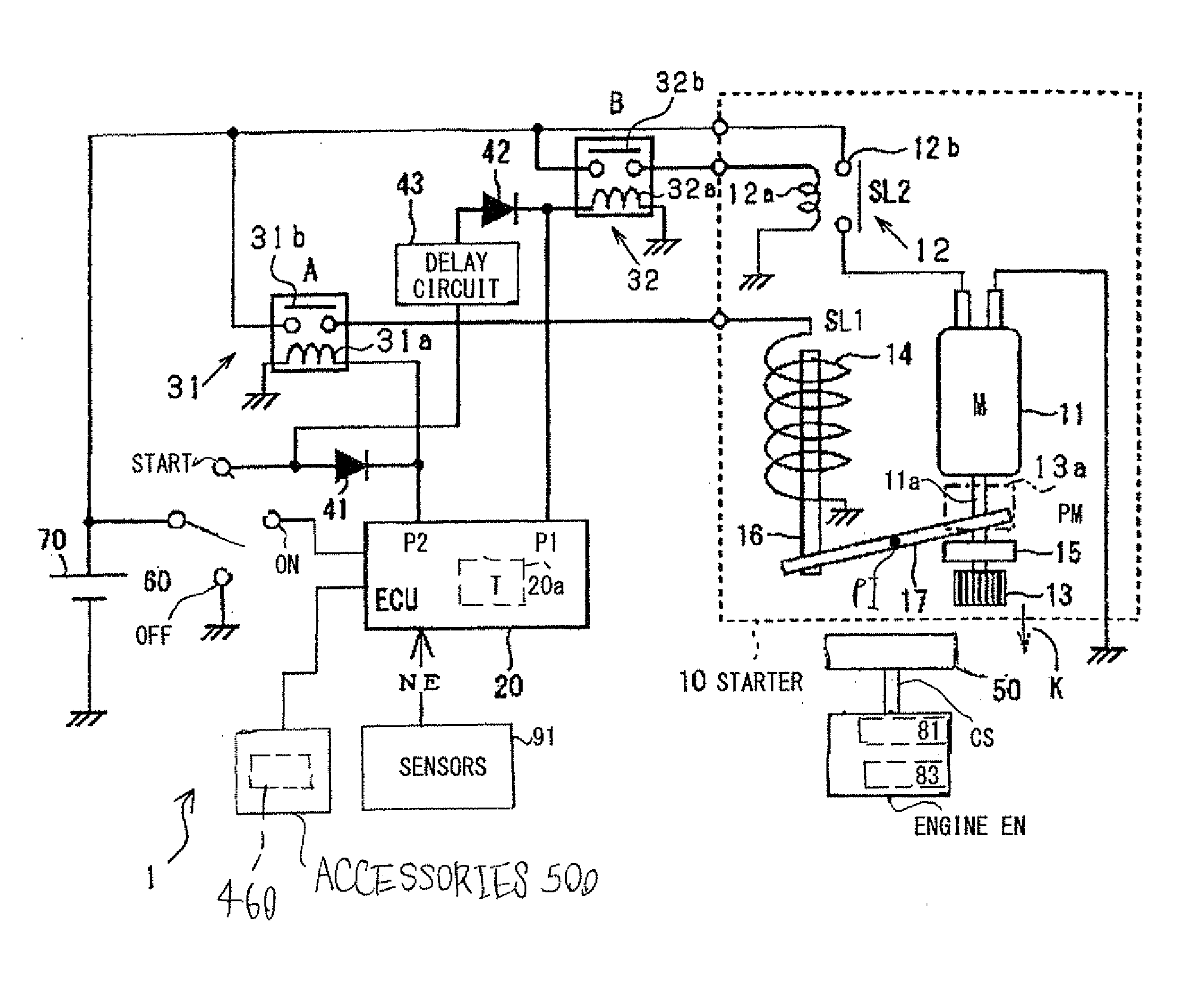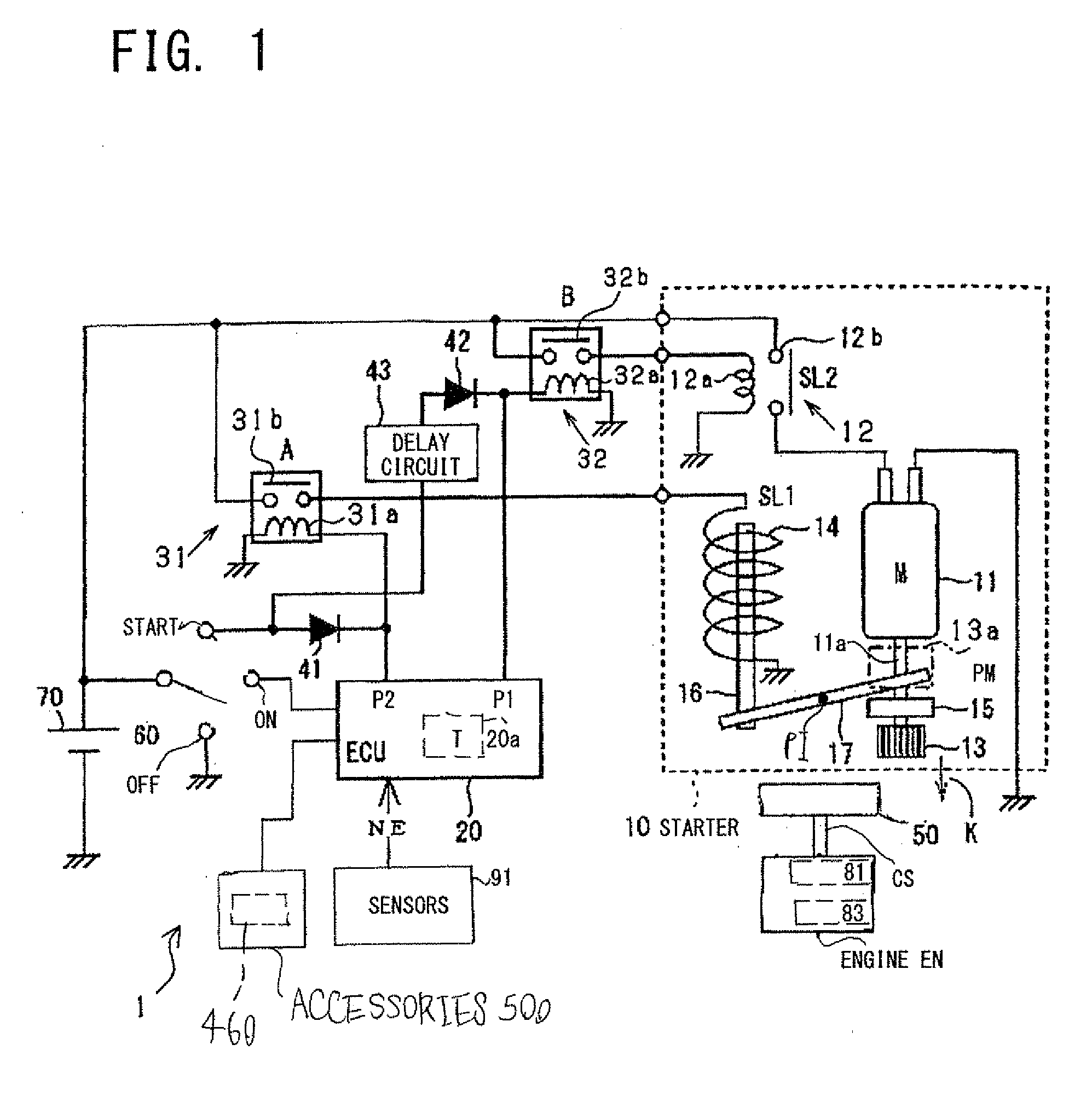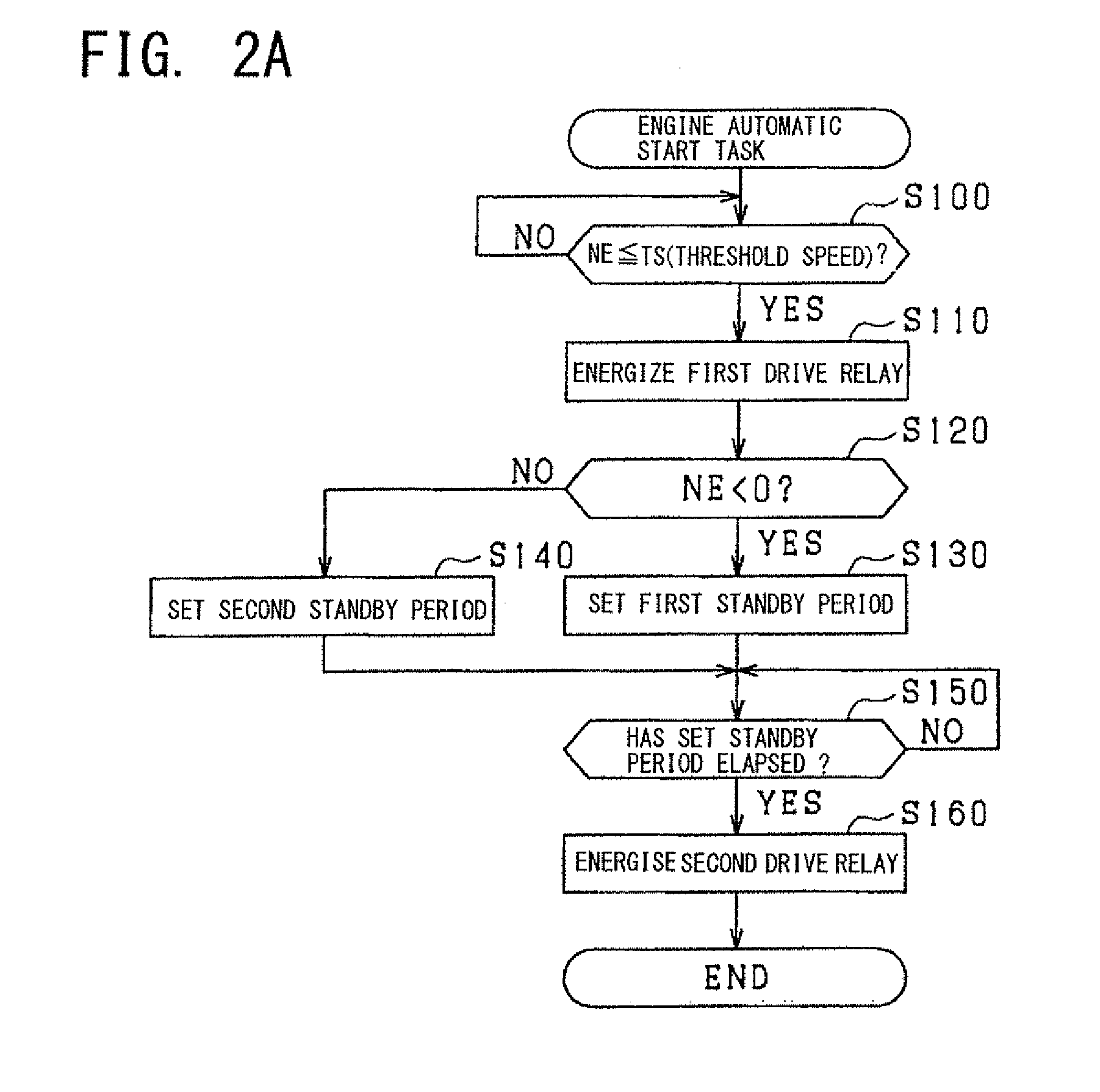System for controlling starter for starting internal combustion engine
- Summary
- Abstract
- Description
- Claims
- Application Information
AI Technical Summary
Benefits of technology
Problems solved by technology
Method used
Image
Examples
first embodiment
[0034]Referring to FIGS. 1 and 2, an engine starting system 1 according to the first embodiment of the present invention is installed in a motor vehicle. The engine starting system serves as an idle reduction system for automatically controlling the stop and restart of an internal combustion engine (referred to simply as “engine”) EN installed in the motor vehicle.
[0035]The engine starting system 1 is comprised of a starter 10 used to start the engine EN, and an electronic control unit (ECU) 20 for control of operations of the starter 1 at the start of the engine EN. The engine starting system 1 also includes a first drive relay 31, a second drive relay 32, a first diode 41, a second diode 42, a delay circuit 43, and a battery 70.
[0036]Referring to FIG. 1, the engine EN has a crankshaft CS, as an output shaft thereof, with one end to which a ring gear 50 is directly or indirectly coupled.
[0037]The engine EN works to compress air-fuel mixture or air by a moving piston within each cyl...
second embodiment
[0162]An engine starting system 1A according to the second embodiment of the present invention will be described hereinafter with reference to FIG. 3. In FIG. 3, in order to simply illustrate the structure of the engine starting system 1A, the pinion 13, the one-way clutch 15, the plunger 14, the shift lever 17, the engine EN, the sensors 91, and the like are omitted in illustration.
[0163]The structure and / or functions of the engine starting system 1A according to the second embodiment are different from the engine starting system 1 in the following points.
[0164]Specifically, a MOS transistor relay (semiconductor relay) 310 is used, in place of the first drive relay 31, as the first switch unit for energizing and deenergizing the solenoid 14. The drain of the MOS transistor relay 310 is electrically connected to the positive terminal of the battery 70, and the source thereof is electrically connected to the solenoid 14.
[0165]A MOS transistor relay (semiconductor relay) 320 is used, ...
third embodiment
[0178]An engine starting system 1B according to the third embodiment of the present invention will be described hereinafter with reference to FIG. 4. In FIG. 4, in order to simply illustrate the structure of the engine starting system 1B, the pinion 13, the one-way clutch 15, the plunger 14, the shift lever 17, the engine EN, the sensors 91, and the like are omitted in illustration.
[0179]The engine starting system 1A according to the second embodiment is configured to drive the drivers 311 and 321 to output the gate current (energizing current) to the MOS transistor relays 310 and 320 to thereby turn on the MOS transistor relays 310 and 320, respectively.
[0180]At that time, the level of the gate current required to keep each of the MOS transistors 310 and 320 in on state is higher than the level of the energizing current to be supplied to the solenoid of each of the mechanical relays 31 and 32.
[0181]This might not maintain each of the MOS transistors 310 and 320 in on state if the b...
PUM
 Login to View More
Login to View More Abstract
Description
Claims
Application Information
 Login to View More
Login to View More - R&D
- Intellectual Property
- Life Sciences
- Materials
- Tech Scout
- Unparalleled Data Quality
- Higher Quality Content
- 60% Fewer Hallucinations
Browse by: Latest US Patents, China's latest patents, Technical Efficacy Thesaurus, Application Domain, Technology Topic, Popular Technical Reports.
© 2025 PatSnap. All rights reserved.Legal|Privacy policy|Modern Slavery Act Transparency Statement|Sitemap|About US| Contact US: help@patsnap.com



